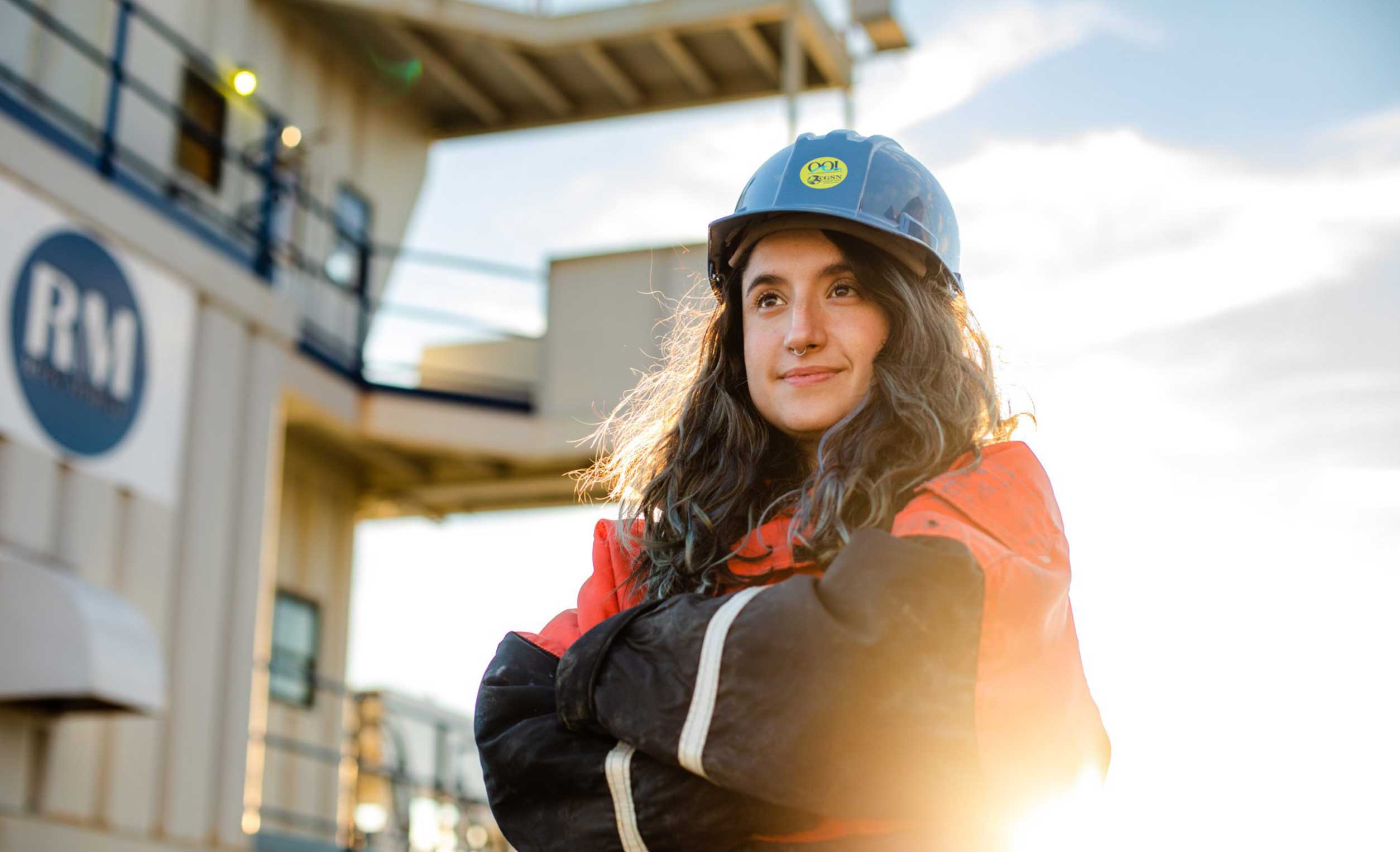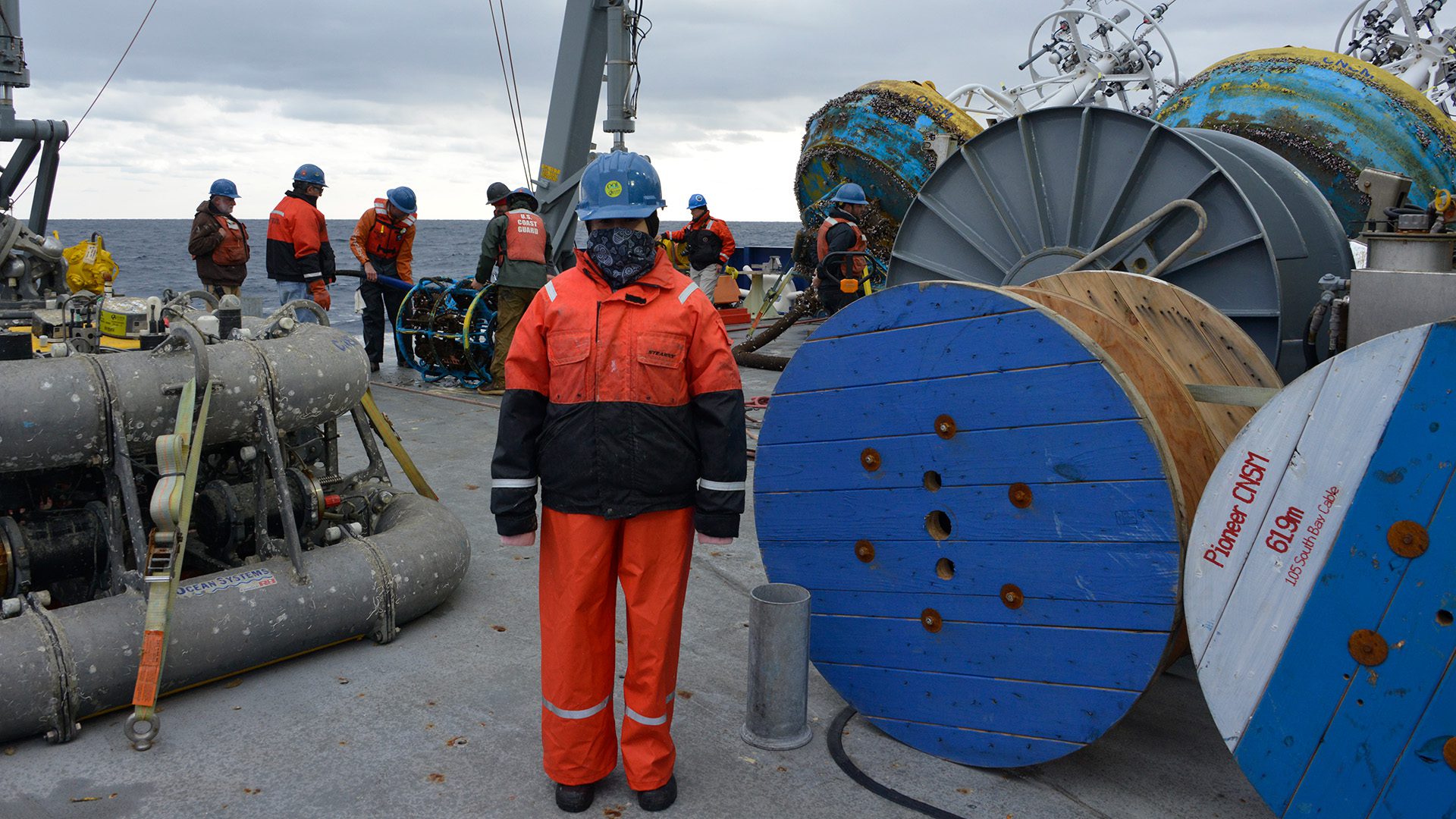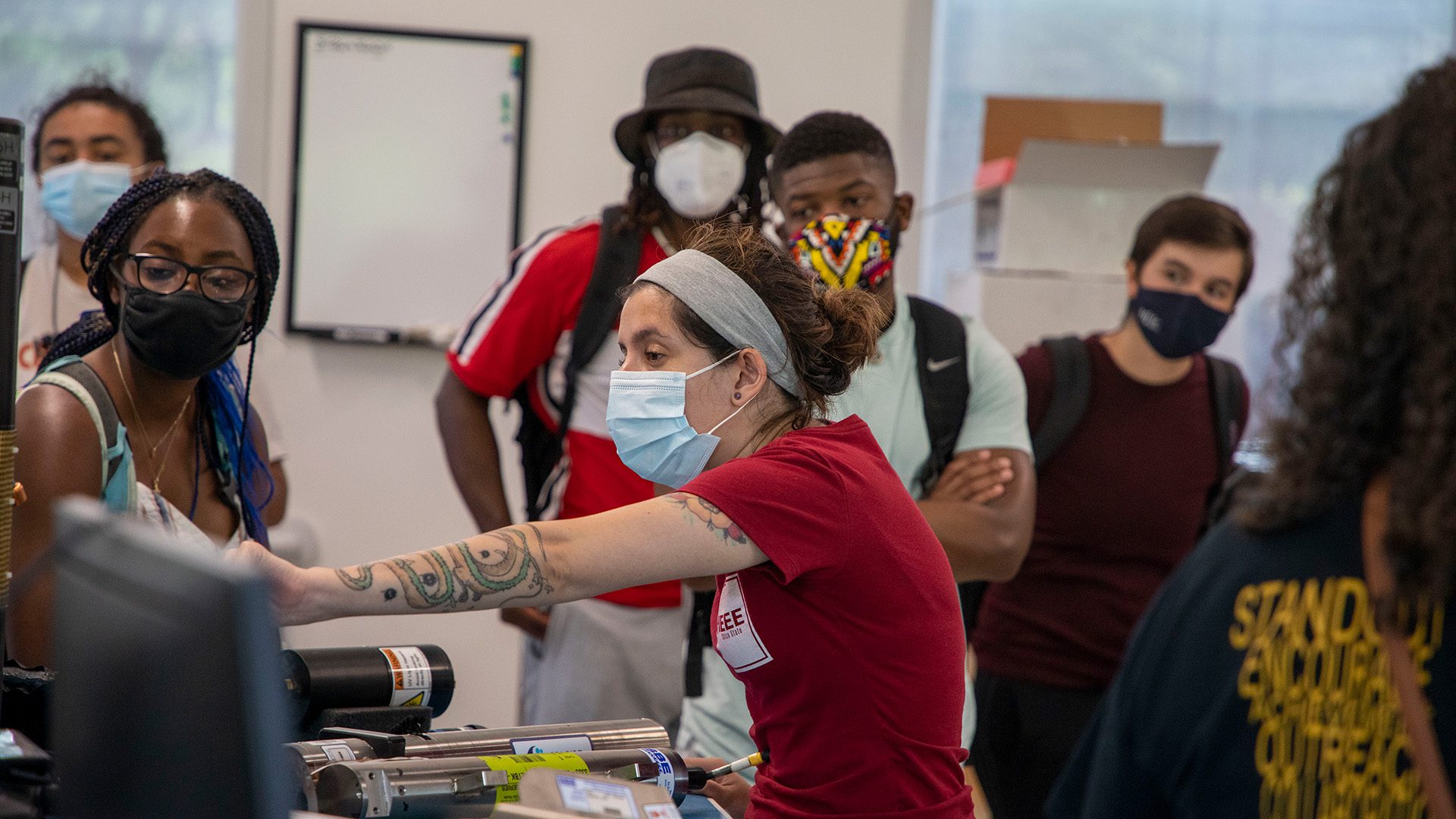From Northern California to Ocean Engineer

This article was originally published by Oceanus and has been republished by Chico State Today with their permission.
It seems improbable that someone living in Gridley, a small farm town of 8,000 people in very northern California, would end up as an OOI engineer whose favorite part of the job is being at sea. But that’s the story of Irene Duran, Engineering Assistant III at the Woods Hole Oceanographic Institution (WHOI). Irene just spent the month of July in the Irminger Sea, preparing and monitoring instrumentation before deployment, downloading data after recovery, and checking the health of recovered instruments that had spent a year in the cold and windy north Atlantic. Interestingly, going to sea was not part of her original job description.
Irene’s journey to the ocean was a circuitous one. She attended California State University, Chico and Butte Community College and “meandered into” an engineering major. Most of the college recruiters visiting her university were focused on manufacturing and other building-related trades. In such a land-locked setting three hours from the coast, ocean science-related work was never presented as a possibility.
By happenstance, Irene was presenting her research on “Using Differential Privacy on Histograms for Information Protection” at a SACNAS (Society for the Advancement of Chicano/Hispanics and Native Americans in Science) Conference. There she met George Liles, the co-director of the Woods Hole Partnership Education Program (PEP). He was the first to talk with her about Woods Hole, how engineering fits into science, and the potential for her to have a science-related career. It was also the first time she had heard of Cape Cod. The rest, as it is said, is history.
The summer of her junior year, she ended up in a WHOI biology lab working with Drs. Heidi Sosik and Stace Beaulieu. There she took on the task of testing cameras for a small-sized, low-cost, low-power plankton imaging system. From that experience, she turned her attention to underwater instrumentation.

The following summer in 2019, Irene returned to WHOI, this time as a Summer Student Fellow, working in the REMUS Lab with Chris Rauch and Gwyneth Packard. Her task in this lab was working on developing a lighting system to explore different light configurations that worked best in fully illuminating images taken by the REMUS Autonomous Underwater Vehicles (AUVs).
Both summer experiences caused her to fall in love with the area and the work. Directly after she graduated in 2020 with a degree in Mechatronic Engineering (geared to robotics and automation), she left her family, friends, and her familiar life, and headed east to return to Cape Cod. She moved without a job, but was determined to work at WHOI. Irene spent a seven-month stint at the local grocery store before an appropriate engineering job opened up at WHOI with the Ocean Observatories Initiative (OOI) and the Upper Ocean Processes Group Meteorological Calibration Lab. “It was exactly what I wanted to do—an engineering position working with surface and subsurface instrumentation,” she explained. Her primary responsibility on land is refurbishing and calibrating meteorological sensors that adorn the top of OOI Surface Moorings and other mooring sites worldwide.
Irene explained that OOI was and remains a great match. “The people in OOI and Calibration Lab were so welcoming and right off the bat, I felt very comfortable with everyone I worked with.” She also mentioned that she liked how many women work in OOI. Irene’s immediate supervisor, Dr. Sheri N. White, made it possible for Irene to go to sea, even though it wasn’t in her initial job description.

Going out to sea is Irene’s favorite part of her job in spite of the long hours, strenuous work, done often in difficult conditions. “In some ways being at sea feels like a vacation, even though it is clearly not. We are working all of the time, but we get to focus on just one thing. We don’t have much access to life back on land and staying focused on one thing is very refreshing. I feel refreshed coming back from sea, that’s for sure,” Irene said. She’s been to sea for four OOI deployment and recovery expeditions.
In addition to her numerous responsibilities on OOI sea-going cruises, Irene likes to write blogs in her spare time. She enjoys sharing the perspective of what it is like to work at sea, what life is like aboard a ship, and what it is like to make a living as an oceanographer. She writes her blogs in Spanish so the word gets out to a broader audience. “So few of us get to do this work. It is really unique and I like to share what it is like with others,” she added.
Irene credits her supervisor, Dr. White, for giving her opportunities to advance her career and expand her skills. As an example, on the latest cruise to the OOI Coastal Pioneer Array last fall, Irene assumed the roles of both Instrument Lead and Profiler Mooring Lead. For this, Irene worked with buoys, Acoustic Doppler Current Profilers and Wire-Following Profilers—helping to recover them, download data, and prepare them for refurbishment. This experience will be a good stepping stone for her to assume additional responsibilities and opportunities to be on the water in the future. Irene’s goal is to one day be the Chief Scientist on an OOI cruise.


